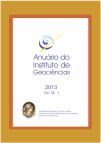Analyzing Urban Green Space Function Emphasizing Green Space Features in District 2 of Tabriz metropolis in Iran
DOI:
https://doi.org/10.11137/2013_1_119_127Abstract
Urban green spaces can be a comprehensive tool for long term protection of environmental sustainability through improving the quality of life. With urban areas development, population growth and activities increase, urban planners prioritized green spaces and breathing issues in the top of their studies; time lapse and outbreak of respiratory illnesses, resulting from pollution and population density, necessitated deep studies of these phenomena. By the appearance of sustainable development theory the plan of developing green spaces achieved a great importance. Nowadays, developing green spaces, especially parks, is a substantial element of urban development plans which reveals the importance of such spaces in human centers. Land price increase and owners' attempts for converting gardens and farms into inhabitable areas have decreased green spaces. From the other hand, the concept of city without green spaces in their different forms is not imaginable. Urban development repercussions and environmental complexities have necessitated the existence of green spaces. Cities have to accept the structure and functions resulting from natural systems to guaranty their own survival. Referring to green spaces as the lungs of the city seems reasonable; thus, this study aims to examine the status of green spaces, focusing on District 2 of Tabriz and its strengths and weaknesses.Downloads
Download data is not yet available.
Downloads
Published
2013-01-01
How to Cite
Abizadeh, S. and Zali, N. (2013) “Analyzing Urban Green Space Function Emphasizing Green Space Features in District 2 of Tabriz metropolis in Iran”, Anuário do Instituto de Geociências. Rio de Janeiro, BR, 36(1), pp. 119–127. doi: 10.11137/2013_1_119_127.
Issue
Section
não definida
License
This journal is licensed under a Creative Commons — Attribution 4.0 International — CC BY 4.0, which permits use, distribution and reproduction in any medium, provided the original work is properly cited.















